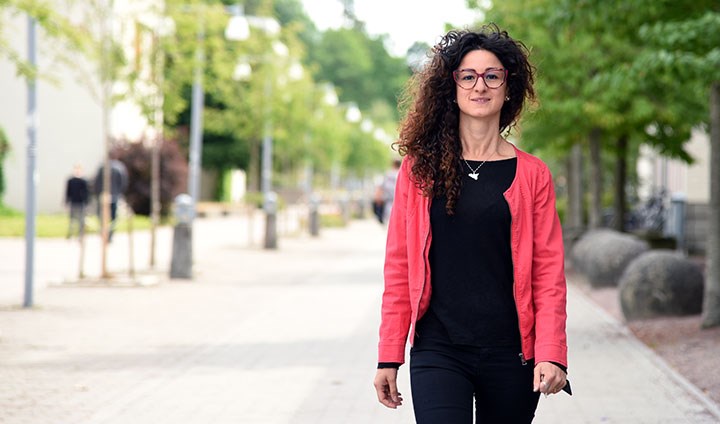3.15 million to Örebro researcher to study self-harming youths

Psychology researcher Delia Latina at Örebro University has received just over SEK 3 million by the Swedish Research Council to study self-harming behaviour in young people. “Perhaps my research can lead to the development of new treatment methods,” she says.
Self-harming behaviour in adolescence – like burning, scratching or hitting body parts – is relatively common. Around 18 per cent of the world’s youths are estimated to have self-harmed at least once. Top of the list is Sweden and Germany, with 42 and 35 per cent respectively. What is more, these youths run a higher risk of taking their own lives later in life.
“In other words, this is a serious problem and I’d therefore like to examine why young people develop self-harming behaviour,” says Delia Latina, researcher in psychology at Örebro University.
Three-year study
The Swedish Research Council has now awarded her a grant of SEK 3.15 million over a period of three years to study self-harming behaviour in youths from two different perspectives: developmental psychology and biology.
“With the developmental psychology approach, I’ll study how conflicts in everyday life impact the development of self-harming behaviour. For this, I will use data collected over four years from 3,200 Swedish youths. The data is based on so-called self-reporting, where the youths have completed a questionnaire.”
At the next stage, Delia Latina will study the problem from a biological perspective. Here she will collect data using saliva samples and brain imaging from 52 German youths. This will allow her to study how self-harming youths react biologically – in terms of brain activity and hormones levels for example – in situations of confrontation. The results will then be compared with those of adolescents not engaging in self-harming behaviour.
Both boys and girls
There are few studies with a biological approach in this field. The research there is, is based on experiments performed in laboratories, but Delia Latina’s view is that these tests do not reflect events facing adolescents in real life.
“As opposed to previous studies, I’m going to create situations in the laboratory that are close to events in their everyday life.”
In the majority of the previous biological studies, only girls have been included.
“Therefore we don’t know if the brain and the stress systems work in the same way for girls and boys when they are forced to handle situations with verbal abuse and threats,” says Delia Latina, who will include both boys and girls in her study.
Her research will be conducted in collaboration with Ulm University in Germany, an institution with extensive experience of analysing biological data.
More treatment methods
Self-harming behaviour in adolescents is a major problem. Nevertheless, there are few treatment methods to help these young people.
“The results of my research may well be used in the development of new treatment methods or preventive measures. In addition, there are major socioeconomic benefits to be had if we are able to identify, at an early stage, a young person at risk of developing self-harm behaviour.”
Text and photo: Mattias Frödén
Translation: Charlotta Hambre-Knight
